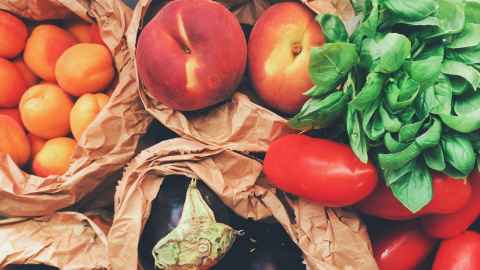‘Great opportunity’ for supermarkets to encourage healthy food choices
19 January 2018
New Zealand supermarkets vary greatly in the healthiness of their food environments and have a great opportunity to create food environments to promote healthier choices, according to new research.

On average, two-thirds of supermarket food promotions in-store, and three-quarters of food promotions in flyers are free of unhealthy foods and beverages, researchers from the University of Auckland found.
However, only about one in four supermarkets had at least 20 percent of checkouts free of confectionary and other unhealthy foods, and about one in six had at least 60 percent of end-of-aisle endcaps free of unhealthy foods. For every metre of shelf length for unhealthy foods, there was 42cm of shelf length for healthy foods on average, with large variations between and within stores.
Healthy foods were relatively less available in supermarkets in the most deprived areas, the researchers found.
The study, Towards healthier supermarkets: a national study of in-store food availability, prominence and promotions in New Zealand, has just been published in the European Journal of Clinical Nutrition. It was funded by the Health Research Council of New Zealand and carried out with consent and cooperation from Progressive Enterprises and Foodstuffs.
The researchers investigated 204 supermarkets – about half of the national total – across the Countdown, PAK’nSAVE and New World chains. Half of these were in the most deprived socio-economic areas. The study measured healthiness indicators relating to food availability (ratio of cumulative linear shelf length for selected healthy versus unhealthy foods), prominence (proportion of checkouts and end-of-aisle endcaps free of unhealthy foods), and promotion (proportion of healthy and unhealthy food promotions in flyers and in-store).
The study’s lead author, Dr Stefanie Vandevijvere, of the University’s School of Population Health, says supermarkets are doing well in some areas, particularly with regard to promotions.
“However, the large variations in healthiness indicators within and across chains present a great opportunity for retailers to continue to improve the healthiness of supermarkets towards best practice,” she says.
Dr Vandevijvere says the new research is the first comprehensive national study on supermarket food environments conducted in New Zealand.
“There are no international benchmarks to compare New Zealand in-store food retail environments against, but importantly this study identified large variations in availability, prominence and promotions between and within retail chains, showing that there is potential for all stores to promote healthy choices as much as the leading stores do.”
University of Auckland’s Professor Boyd Swinburn, who was a co-author on the study, said that “in the context of New Zealand’s food environments, supermarkets play a critical role because of their close relationships with and significant influence over their customers and food suppliers. They are best placed to broker supply and demand towards healthier choices.”
Previous research shows that unhealthy food environments are one of the main drivers of obesity. In-store retail environments, including the cost, quality, availability and promotion of food, are seen as important settings for potential interventions to improve diets.
New Zealanders buy the majority of their food at supermarkets; 87 percent of households buy food and drinks from supermarkets at least weekly.
The study, ‘Towards healthier supermarkets: a national study of in-store food availability, prominence and promotions in New Zealand’ has been published in the European Journal of Clinical Nutrition.
Media queries
Anna Kellett | Senior Media Adviser
Tel: 09 923 9336
Mob: 027 838 9202
Email: anna.kellett@auckland.ac.nz